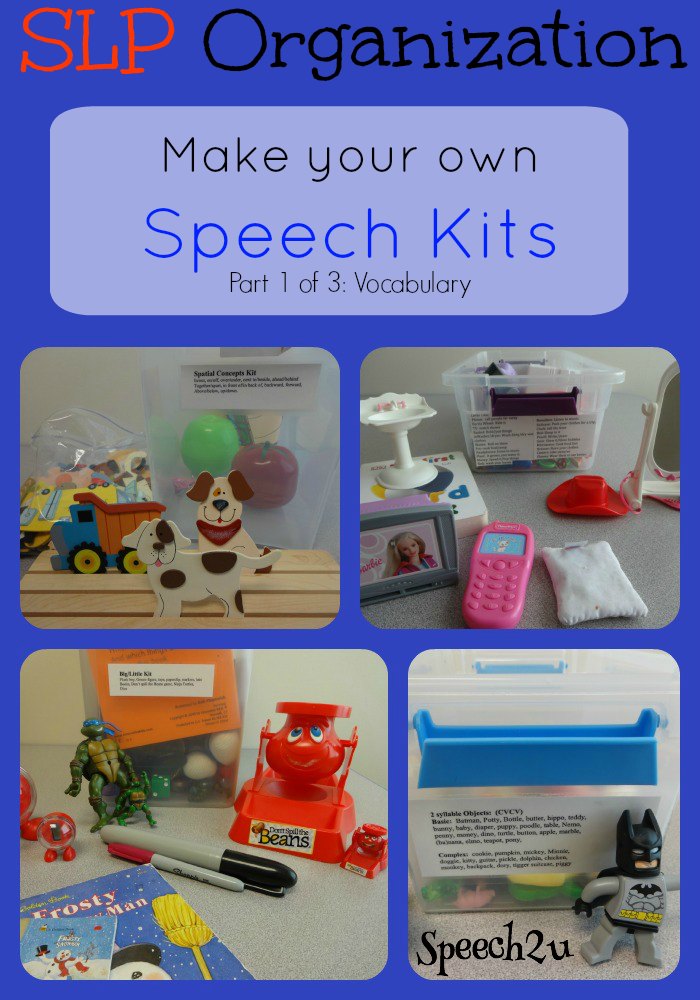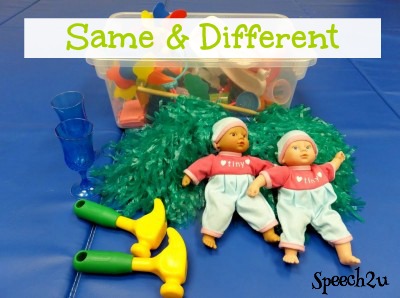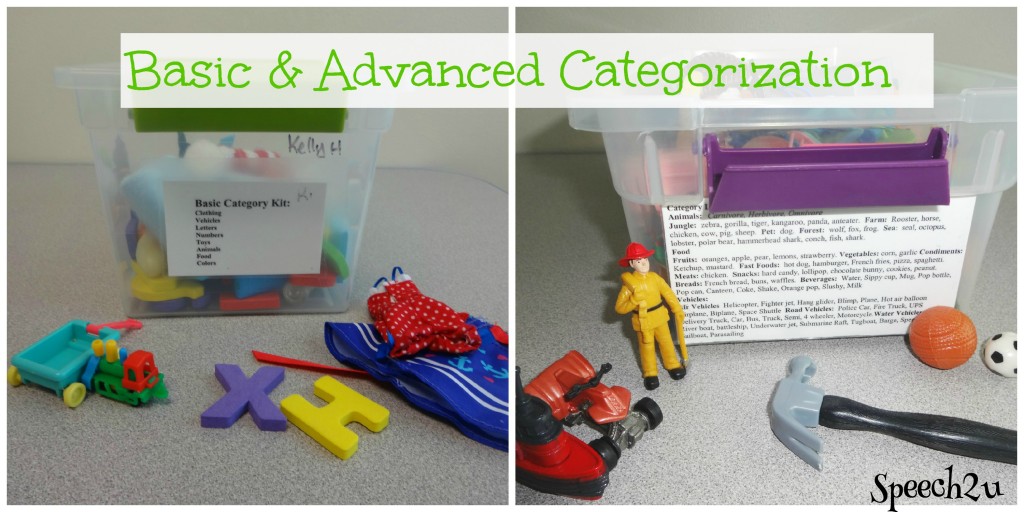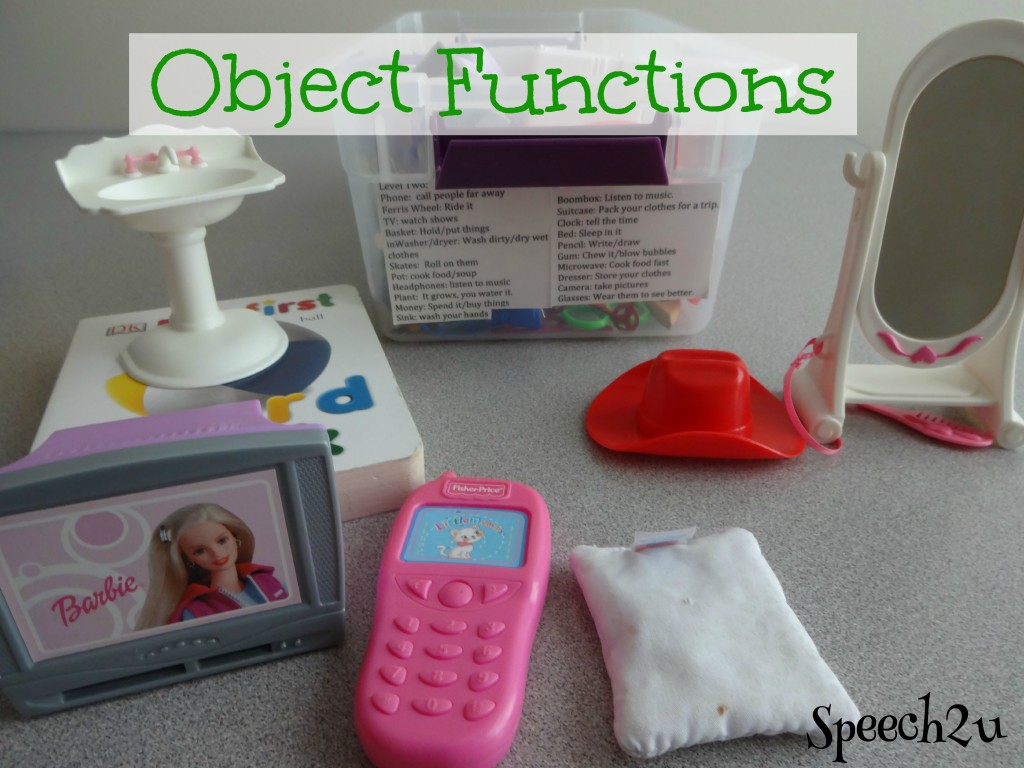I LOVE using manipulatives in therapy. Most of my clients are more motivated to participate in activities when there are objects involved. If I have a client who is struggling with a language concepts, I may move back towards objects-or pair objects with worksheets/picture cards to see if it improves their comprehension. There are commercially available speech kits but I’ve spent the last 10 years or so building my own kits.
Where to find manipulatives:
- Ebay-I was lucky enough to purchase a 5 pound box of Barbie accessories for about 30.00. The price seemed spendy but I ended up with thousands of little objects. Completely worth it.
- Toobs® by Safari– I love these. Each tube contains about 10 plastic replica figurines. They have a variety of categories (musical instruments, Egyptian items, bugs, farm animals etc.) They sell these at Michael’s craft store I save my 40-50% off coupons and can usually pick up a toob® for around 6.00.
- Cake decorating stores-I look at the clearance sections if they have them.
- Goodwill grab bags-the Goodwill by my house often bags up smaller toys for 2-3.00. I pick up action figures, McDonald’s toys and other small items. I donate back what I don’t need.
- Dollar Stores
- Garage Sales
The Kits I love:
- Same and Different Kits:
- Categorization kits
- Object function kits
- Spatial concept kits
- Big/little kits
- Social skills kits
- CVCVCV, CVCV kits and articulation sound boxes
How to Create your own kits:
I keep each of my kits in the same set of boxes so that they stack neatly on my shelves. Since I share my materials with other therapists, I printed the contents of each box and placed it on the outside of the box using contact paper. I don’t know that it completely helps from things getting messed up-but I like the fact that I can look and see what is “missing” pretty quickly by comparing it to the list on the box.
Same & Different Kits:
For this kit, you will need to start collecting pairs of objects. The dollar store or dollar spot is a great place to find items for pretty cheap. I also found some items that we had two of at the clinic. I tried to find objects that involved mostly simple actions. For example-a hammer is great for early pretend play and imitation. I use my same & different kit to address a variety of activities including:
- Imitation with objects
- Early play skills
- Same and different concepts
- Plurals
- Compare/contrast activities
Here is what I included in my box
Babies, hammers, pom poms (great for hiding behind, shaking and creating crazy wigs), cups, dishes, forks, spoons, play food, bottles, action figures, pinwheels.
Categorization Kits:
I created two sets of these kits-one with basic categories and one with more complex categories (ex. planets, tools etc.) I used the basic categories section on the awesome Free language stuff website as a guide. My basic category kits include: animals, clothing, food, toys, and vehicles. My advanced set also includes these main categories but also includes sub categories (ex. farm animals, zoo animals etc). I use my categorization activities to focus on:
- Vocabulary naming
- Category naming (place three items out-can they guess the category?)
- Sorting
- Category exclusion (what does not belong)
Object Function Kits:
I think you could use the category kits for this too but I wanted something where I could specifically work on object functions. (There’s not as much that you can do with a cat or a taco.) I broke them up into two categories again-beginning and advanced so that I could progress my clients through a “hierarchy.” I also included a My First words board book so I could work on describing object functions within pictures. I use my object functions box to work on:
- Identifying object functions
- Receptive fill in the blank tasks (ex. I sit on a _______)
- Stating object functions
- Increasing sentence length with functions (I use a ______ to ________.)
- Compare/Contrast (Ex. The TV and the phone are pink but you use a TV to watch shows and a phone to call people).
Do you use manipulative kits? I’d love to hear how you use them. If you enjoyed this post, please consider sharing it on Pinterest by clicking on the pictures above.
Check back next week to see how I organized my other kits!






What a great post full of wonderful ideas! Thank you so much:)
This is a great idea!
Great post! Love this idea and will definitely try! Hope you have a great school year!
Thanks so much!
I love this idea! Keeping everything labeled will be so helpful with all the little pieces that get dropped into the bottom of the therapy bag
I’m so glad this post was helpful! Thanks for stopping by.
Every SLP needs this! Genius! I get a lot of things from Garage sales and Oriental trading company. Love all your ideas!
Thanks so much!
what do you include in your social skills kit?
Hi Stacie,
Thanks for stopping by! I have a lot of thought bubbles in my social skills kits. Here is a link to my original kit. http://www.speech2u.com/2013/01/january-organization-speech-kits-social-skills-edition.html
Thank you for validating my long observed theory. Kids love toys and using manipulatives increases engaged/on task behavior. Super ideas.
G. Hall
Thanks so much!